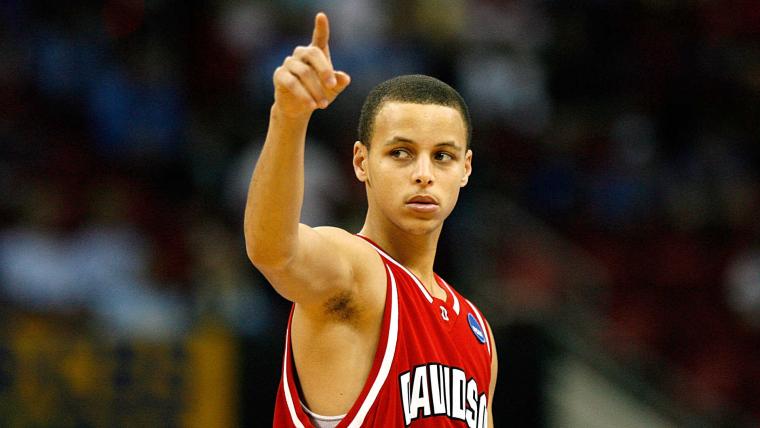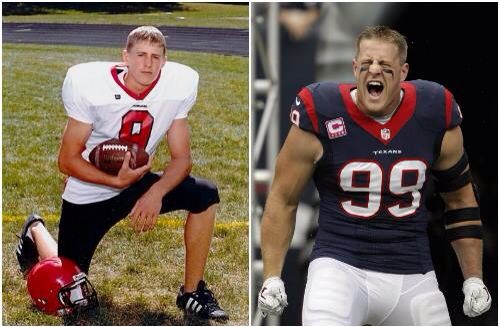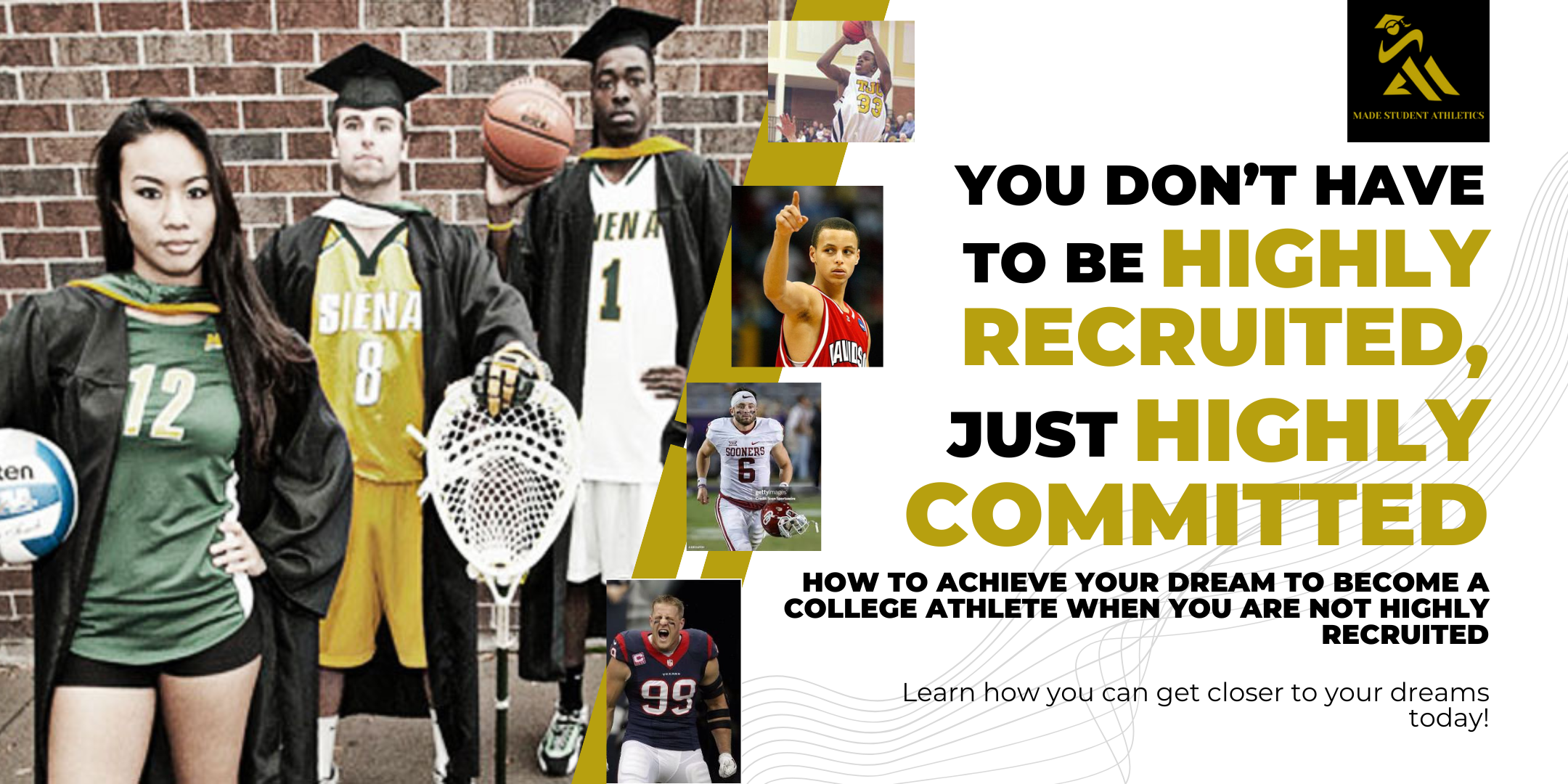Achieving Your College Athlete Dream: How To Become A College Athlete When You Are Not Highly Recruited
If you truly love sports and are willing to put in the work, there’s an opportunity out there for you. While many aspiring college athletes think they need to be heavily recruited to succeed, the truth is, you can still achieve your dream of playing college sports even if you’re not on top recruiters’ radar. What matters most is your drive, commitment, and strategic approach. There are countless examples of athletes who weren’t highly recruited in high school but went on to have successful college and pro careers, such as NBA star Stephen Curry and NFL legend J.J. Watt. Let’s explore how you can turn your passion into a college sports reality, no matter where you start.
Where to Begin: Your Student-Athlete Vision
Before you start worrying about recruiters or scholarship offers, take a step back and create your personal vision. What do you want to accomplish as a student-athlete? Are you aiming for a specific college, conference, or division? This is the time to dream big but also be realistic about your current skills and areas for growth. Defining your vision will give you clarity and direction for the journey ahead. Remember, the goal isn’t just about getting recruited; it’s about finding the right school where you can thrive both athletically and academically.

Stephen Curry is a perfect example. Coming out of high school, Curry was overlooked by top college basketball programs due to his size and lack of physicality. But instead of giving up, he focused on what he could control—his shooting ability and work ethic. He accepted a scholarship to a smaller school,
Davidson College, where he became one of the best players in the nation, leading his team to a deep NCAA tournament run. Today, Curry is widely regarded as one of the greatest NBA players of all time. His story shows that even if you don’t receive attention from big-name schools, you can still make your mark if you work hard and believe in yourself.
Learn What It Takes
Once you have your vision, it’s time to learn what it takes to make it happen. Research the academic and athletic requirements for your target schools. What skills do coaches look for in your sport? What’s the level of competition in the division you’re aiming for? Talk to current college athletes, watch games, and reach out to coaches to get a better understanding of what’s expected. The more you know, the more prepared you’ll be to develop the skills needed to compete.
Look at J.J. Watt, another athlete who wasn’t highly recruited out of high school. Watt started his college career at Central Michigan University as a tight end before transferring to the University of Wisconsin to play defensive end. It was there that he developed into one of the most dominant defensive players in the country. His persistence and willingness to adapt helped him overcome the lack of early

recruitment. Watt went on to become a three-time NFL Defensive Player of the Year, proving that the path to greatness doesn’t have to be straightforward or come with a lot of early attention.
Plan Your Path
After gaining insight into what it takes, the next step is planning your path. This is where the real work begins. It’s not just about improving your athletic performance; you’ll also need to focus on academics, leadership skills, and character development. Create a schedule that includes regular training, academic support, and time for personal growth. Whether it’s finding a coach or trainer, joining camps or showcases, or reaching out to college coaches yourself, each step you take will bring you closer to your goal. Remember, recruiting is often about getting your name out there—don’t wait for others to find you, be proactive.

Athletes like Baker Mayfield exemplify this. Mayfield was a walk-on at both Texas Tech and Oklahoma, not initially receiving a scholarship offer at either school. He bet on himself and won the starting quarterback job at both programs. His grit and determination led him to win the Heisman Trophy and become the No. 1 overall pick in the NFL Draft. Mayfield’s journey shows that even without early recruitment, you can still reach the highest levels through perseverance and hard work.
High Pursuit: Commitment to Excellence
The path to becoming a college athlete isn’t a sprint—it’s a marathon. You have to stay committed, even when the process gets tough. This is what I call the “high pursuit”—the relentless focus on improvement and resilience. It’s not enough to be good, you have to work at being great. Whether it’s on the field or in the classroom, the pursuit of excellence in every area is what sets successful student-athletes apart from the rest. Keep pushing yourself to get better, learn from setbacks, and stay connected to your vision.

Jimmy Butler is another great example of high pursuit. Butler was barely recruited out of high school and had to play at a junior college before eventually transferring to Marquette University. Despite not being highly touted, Butler’s work ethic and resilience helped him become a key player in the NBA, where he’s known for his leadership and tenacity. His story is a testament to the power of persistence and focusing on long-term goals, even when the odds are stacked against you.
In conclusion, you don’t have to be the most recruited athlete to play at the college level. What you need is a clear vision, the willingness to learn and improve, and a relentless commitment to your goals. By putting in the work, staying focused, and being proactive, you can create opportunities for yourself. Just like Stephen Curry, J.J. Watt, Baker Mayfield, and Jimmy Butler, your dream of becoming a college athlete is within reach—as long as you’re ready to pursue it with passion and determination. If this is you, MADE Student Athletics is here to help! Click the link below to book a session with us and begin your journey to collegiate athletic success!
